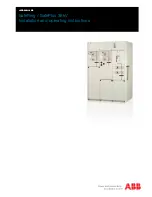
Chapter 8: Using the Command Line Interface
357
Variables:
<n> is the environmental sensor number. The environmental sensor
number is the ID number assigned to the sensor, which can be found
on the Peripheral Devices page of the PX web interface.
Displayed information:
Without the parameter "details," only the reading, threshold,
deassertion hysteresis and assertion timeout settings of the specified
environmental sensor are displayed.
With the parameter "details," more sensor information is displayed,
including resolution and range.
Note: For a discrete (on/off) sensor, the threshold-related and
accuracy-related data is NOT available.
Environmental Sensor Default Thresholds
This command syntax shows a certain sensor type's default thresholds,
which are the initial thresholds applying to the specified type of sensor.
#
show defaultThresholds <sensor type>
To show detailed information, add the parameter "details" to the end of
the command.
#
show defaultThresholds <sensor type>
details
Variables:
<sensor type> is one of the following numeric sensor types:
Sensor types
Description
absoluteHumidity
Absolute humidity sensors
relativeHumidity Relative humidity sensors
temperature Temperature
sensors
airPressure
Air pressure sensors
airFlow
Air flow sensors
vibration Vibration
sensors
all
All of the above numeric sensors
Tip: You can also type the command without
adding this option "all" to get the same data.
Summary of Contents for PX2-1000 SERIES
Page 5: ......
Page 71: ...Chapter 4 Connecting External Equipment Optional 52...
Page 231: ...Chapter 6 Using the Web Interface 212 8 Click OK...
Page 589: ...Appendix I RADIUS Configuration Illustration 570 Note If your PX uses PAP then select PAP...
Page 594: ...Appendix I RADIUS Configuration Illustration 575 14 The new attribute is added Click OK...
Page 595: ...Appendix I RADIUS Configuration Illustration 576 15 Click Next to continue...
Page 627: ...Appendix K Integration 608 3 Click OK...
Page 647: ...Index 629 Z Zero U Connection Ports 74 Zero U Products 2...
















































